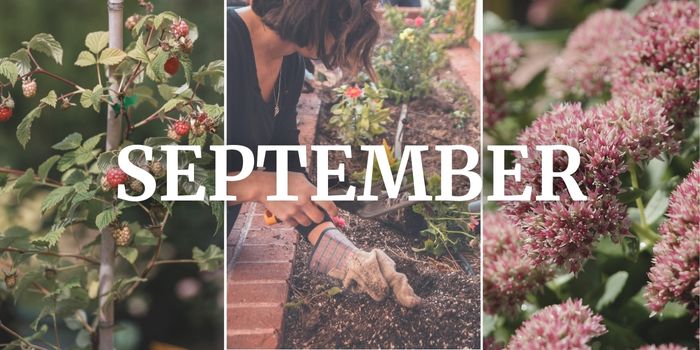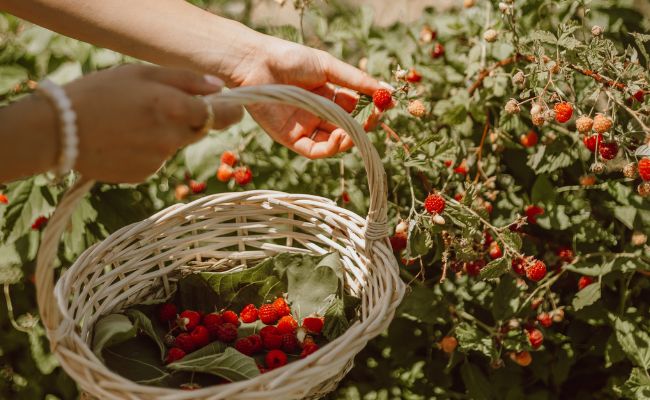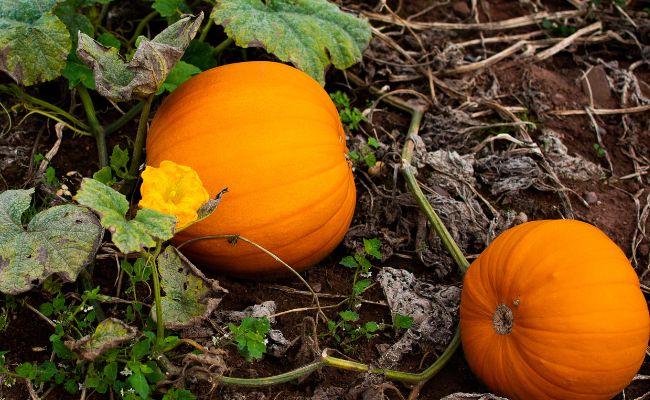
September is a wonderful month in the garden. The days are still pleasantly warm, but the light is starting to soften, mornings can feel crisp, and there’s that unmistakable shift towards autumn. It’s a time of harvest, preparation, and planting – tying up loose ends from summer while looking forward to the year ahead.
Planting & Planning Ahead
Spring bulbs – September marks the start of bulb-planting season. Now’s the time to pick up daffodils, crocuses, hyacinths, and bluebells, plus dwarf varieties such as irises and scillas for pots. Plant them at the right depth now and you’ll be rewarded with cheerful blooms in spring.
Bulb lasagne – For an extra-long display in pots, try layering bulbs in what’s known as a “bulb lasagne”. Larger, later-flowering bulbs such as tulips go at the bottom, daffodils in the middle, and smaller, earlier bulbs like crocuses at the top. They’ll flower in sequence, giving you weeks of colour from just one pot. (See our photo for inspiration!)
Autumn containers – Fill pots and baskets with cyclamen, heathers, violas, and heucheras for a burst of seasonal colour that will last well into autumn.
Perennials – Lift and divide any congested clumps, and replant them to give the plants more room and energy. It’s also the perfect time to fill gaps with late-flowering varieties such as sedums, which provide valuable nectar for pollinating insects.
Hardy annuals – Sow flowers like cornflowers, poppies, and nigella directly outdoors now for strong, early displays next year.


Fruit & Vegetables
-
Summer raspberries – prune out the old fruited canes down to the base, and tie in the fresh new growth for next year. Continue to harvest autumn varieties.
-
Onions and shallots – plant sets in a sunny spot, 10cm apart, with the tips just showing above the soil.
-
Pumpkins and squash – cut back leaves covering the fruits to help them ripen in the autumn sun.
-
Apples and pears – pick before they fall, and store undamaged fruits somewhere cool if you can’t eat them fresh.
-
Tomatoes – cut off trusses of unripe fruit before it gets too cold, and let them ripen indoors.
-
Apple trees – finish summer pruning of trained or free-standing varieties to encourage better fruiting in years to come.
Lawns & General Maintenance
-
Give lawns a bit of TLC after summer wear and tear: rake out thatch, spike compacted areas with a fork, and reseed any bald patches.
-
Clear out water butts and check fittings so they’re ready to capture autumn rain.
-
Collect fallen leaves and start a leaf mould bin – either a simple chicken-wire frame or black bin bags with holes punched in. In a year or two, you’ll have a fantastic soil improver.
-
Check tree ties and supports to make sure they’re secure before autumn gales arrive.
-
Inspect roses for signs of blackspot and other fungal problems. Remove and bin any affected leaves to stop the spread.
-
Tidy up cold frames and greenhouses, ready for overwintering tender plants or for early sowing.
-
Your maincrop potatoes are ready to lift once the foliage has died back. Choose a dry day and use a garden fork to carefully lift the tubers, taking care not to pierce or bruise them. Brush off excess soil, but don’t wash them, as moisture can encourage rot. Leave them to air-dry for a few hours in a shaded, frost-free spot. Once dry, store them in a cool, dark, well-ventilated place – hessian sacks, paper bags, or wooden crates lined with newspaper work best. Avoid plastic bags, which trap moisture. Stored correctly, your potatoes should keep for three to six months, and sometimes even longer.


Wildlife-Friendly Gardening
Leave sunflower seedheads standing – the birds will love them.
Plant late-flowering perennials such as sedums or Michaelmas daisies to give bees and butterflies a final boost before winter.
Put netting over ponds to keep out falling leaves, which can quickly rot and upset the balance of the water.
Greenhouse & Indoor Jobs
Keep an eye on ventilation, closing vents at night now temperatures are dropping.
Plant prepared hyacinth bulbs in pots or hyacinth glasses if you’d like to enjoy fragrant indoor blooms at Christmas.
Houseplants – Start reducing watering as growth slows. Bring in any plants that have spent the summer outdoors before nights get too chilly. Nobody likes a frosty succulent!
Maintain good hygiene by removing faded flowers and yellowing leaves before fungal diseases can set in.
